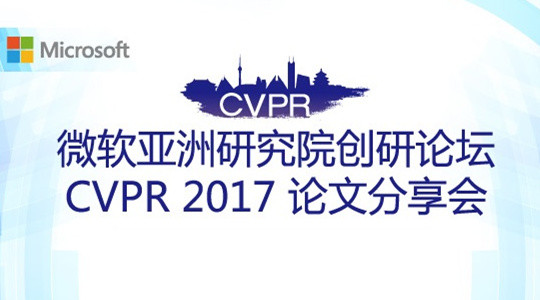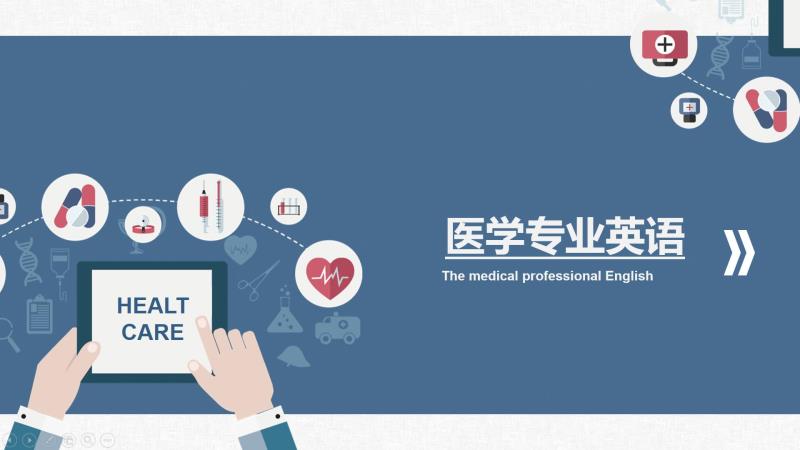
当前课程知识点:Diagnostics in Chinese Medicine > Week 2 Basic Theory of Chinese Medicine 2:Zang-Fu Theory > 2.0 Outline > 2.0 Outline
返回《Diagnostics in Chinese Medicine》慕课在线视频课程列表
返回《Diagnostics in Chinese Medicine》慕课在线视频列表
同学们好
我们前面学习了阴阳学说和五行学说
阴阳学说是一个二元论 五行学说是一个多元论
阴阳学说和五行学说 是中医的两个说理工具
中医就是用这两个说理的工具来研究人的
五脏六腑的生理和病理的
那么我们今天开始学习中医研究的对象 五脏六腑
五脏六腑学说又称脏腑学说
是通过人体的生理病理的外在现象的观察
研究人体内在各个脏腑的生理功能
病理变化及其相互关系的学说
脏腑学说对于阐述人体的生理和病理
指导临床实践具有普遍意义
在中医理论体系中占有极其重要的地位
脏腑学说包括什么内容呢?
脏腑学说 主要包括五脏 六腑和奇恒之腑
五脏是指的肝 心 脾 肺 肾
六腑是指的胆 小肠 胃 大肠 膀胱和三焦
奇恒之府是指的脑 髓 骨 脉 胆 女子胞
这个女子胞就是指的女子的子宫
五脏六腑有什么共同的生理特点呢?
我们先看看五脏:肝 心 脾 肺 肾
他们主要的生理特点是:化生和贮藏精气
他们都是实质性的脏器
以贮藏精气为主
精气应该要满 而不能随便泻
所以五脏 应该满而不能实
五脏以贮藏精气为主
而精气容易耗损
所以 五脏病变多以虚证为主要病理特点
六腑是指的胆 小肠 胃 大肠和膀胱以及三焦
它们的生理功能是指的受盛和传化水谷
这个水谷就是我们通常讲到的饮食物
饮食物在六腑中间传导
但是不能够停聚在六腑中
所以我们又称为传化物而不藏
或实而不能满
六腑的生理特点 以通为用 以降为顺
所以六腑必须要保持通畅
六腑因为以传导消化物为主
如果消化物
贮藏停聚在胃肠中 就会出现实证
所以六腑是以实证居多
奇恒之腑 是指脑 髓 骨 脉 胆 女子胞
它们的形态中空 类腑
功能藏精气而似脏
这似脏又似腑 但又不是脏又不是腑
所以称它们为奇恒之腑
奇恒之腑的功能主要是跟五脏类似 藏精气而不泻
奇恒之腑的病变 通常也是以精气耗损为主
所以它的病理多以虚证为主
脏腑学说 主要特点就是以五脏为中心的整体观
中医学认为
人是一个有机的整体
人和自然环境也构成一个有机的整体
而五脏就是这个整体观的中心
我们前面在学习五行学说的时候 已经见到这个五行归类表
这个五行归类表是以五行为中心
归纳了人体五脏六腑 四肢百骸
也归纳了自然界各种事物和现象
从而把人和自然界联系成一个整体
这个整体的中心就是五脏
人以五脏为中心
人体的外在形体诸窍 四肢百骸 精神情志
都与五脏密切联系
人的生理是以五脏为中心
人体的病理呢 仍然也是五脏为中心
也就是人体的外在病变
都是五脏病变所导致
因此我们在对人的疾病进行诊病的时候
我们最终一定还是要落实到
是肝 心 脾 肺 肾哪一个脏的病变
这就是我们的一个核心
以上是脏腑学说的概述的部分
接下来我们将分别学习
五脏六腑的生理功能和病理变化
-Introductory remark
--QQ groups、WeChat public account
-Introduction
--【Discussion 1】Why do you want to take this course?
-Unit test for Introduction
-1.1 Yin-yang theory
-1.2 The theory of five elements
--1.2.1 The theory of five elements
--1.2.2 Application of the theory of five elements
-Frequently Asked Questions
-Unit test for week 1
-2.0 Outline
--【Discussion 2】How to understand the holistic view centered on the Zang Fu theory?
-2.1 Liver
--【Discussion 3】Why is repose more important than vigorous exercise in recuperation for patients with
-2.2 Heart
-2.3 Spleen
-2.4 Lung
--2.4 Lung
-2.5 Kidney
-2.6 Six fu organs
-Frequently Asked Questions
-Unit test for week 2
-3.1 Qi
--3.1 Qi
-3.2 Blood
-3.3 Body fluid
-3.4 The relationship of qi, blood and body fluid
--3.4 The relationship of qi, blood and body fluid
--【Discussion 4】A discussion about the theory of qi, blood and body fluid
-Frequently Asked Questions
-Unit test for week 3
-4.0 Outline
-4.1 Six exogenous factors
--4.1.2 Nature and pathogenicity of wind and cold
--4.1.3 Nature and pathogenicity of summer heat and damp
--4.1.4 Nature and pathogenicity of dryness and fire
-4.2 Etiology of visceral impairment
--4.2 Etiology of visceral impairment
-Frequently Asked Questions
-Unit test for week 4
-5.0 Outline of inquiry
--【Discussion 5】If you were a patient, how would you describe your condition to your doctor first?
-5.1 Inquiry of Chills and fever
--5.1.1 Chills and fever(Aversion to cold with fever)
--5.1.2 Chills and fever(Chills without fever)
--5.1.3 Chills and fever(Fever without chills)
--5.1.4 Chills and fever(Alternative chills and fever)
--【Discussion 6】How to understand "if you have clinical manifestations of cold, that is exterior syndr
-5.2 Inquiry of perspiration
-Frequently Asked Questions
-Unit test for week 5
-5.3 Inquiring of pain
--【Discussion 7】How to understand "stagnation leading to pain and innourish leading to pain"?
-5.4 Inquiring of head, body, thorax and abdomen
--5.4 Inquiring of head, body, thorax and abdomen
-5.5 Inquiring of ears and eyes
--5.5 Inquiring of ears and eyes
-5.6 Inquiring of sleep
-5.7 Inquiring of food and drink, appetite and taste
--5.7 Inquiring of food and drink, appetite and taste
-5.8 Inquiring of defecation and urination
--5.8.1 Inquiring of defecation
--5.8.2 Inquiring of urination
-5.9 Inquiring of infantile and women's disease
--5.9 Inquiring of infantile and women's disease
-Unit test for week 6
-6.0 Outline of Observation
--【Discussion 8】Please use the whole body inspection (including the expression, complexion and figure)
-6.1.1 Observation of vitality
--6.1.1 Observation of vitality
-6.1.2 Observation of the color
--6.1.2.1 The content, principles of inspection of the color
--6.1.2.2 Indication of diseases by five colors
--【Discussion 9】How do you understand the normal complexion of a normal people?
-6.1.3 Observation of the appearance
--6.1.3 Observation of the appearance
-6.1.4 Observation of figure and posture
--6.1.4 Observation of figure and posture
-Unit test for week 7
-6.2.1 Observation of head and face
--6.2.1 Observation of head and face
-6.2.2 Observation of five sensory organs
--6.2.2.1Observation of five sensory organs(observation of eyes,ears,nose)
--6.2.2.2Observation of five sensory organs(observation of lips,teeth and gums,throat)
-6.2.3 Observation of body
-6.2.4 Observation of limbs
-6.2.5 Observation of two lower orifices
--6.2.5 Observation of two lower orifices
-6.2.6 Observation of skin
-6.3 Observation of excreta
-6.4 Observation of infantile fingerprints
--6.4 Observation of infantile fingerprints
-Frequently Asked Questions
-Unit test for week 8
-7.1 Outline of tongue inspection
--7.1.1 The morphology and structure of the tongue
--7.1.2 The principle of tongue examination
--7.1.3 The method and precaution of tongue examination
--7.1.4 The content of tongue examination, normal tongue
-7.2 Inspection of tongue structure
--7.2.1 Observe the color of tongue
--7.2.2 Observe the shape of tongue
--7.2.3 Observe the states of tongue
--7.2.4 Observation of sublingual vein
-7.3 Observation of tongue coating
--7.3.1 Observation of coating texture
--7.3.2 Observe the color of coating
-7.4 Clinical significance of tongue diagnosis
--7.4 Clinical significance of tongue diagnosis
--【Discussion 10】Why to observe the tongue can be used to diagnose disease?
-Unit test for week 9
-8.1 The principle of pulse examination
--8.1 The principle of pulse examination
-8.2 The regions and methods of pulse examination
--8.2 The regions and methods of pulse examination
-8.3 The elements of pulse examination and the normal pulse
--8.3 The elements of pulse examination and the normal pulse
-8.4 Characteristics and significance of pulse
--8.4.1 Superficial pulse, deep pulse, slow pulse, rapid pulse
--8.4.2 Surging pulse, thin pulse, long pulse, short pulse
--8.4.3 Feeble pulse, forceful pulse, slippery pulse, uneven
--8.4.4 Taut pulse, tense pulse,soggy pulse, moderate pulse
--8.4.5 Knotted, slow-regular-intermittent, irregularly abrupt
-8.5 Similar pulse, concurrent pulse, pulse indicating deterioration of visceral qi۞
--8.5 Similar pulse, concurrent pulse, pulse indicating deterioration of visceral qi۞
--【Discussion 11】Why is complex pulse more common than single-factor pulse?
-8.6 Women’s pulse, children’s pulse
--8.6 Women’s pulse, children’s pulse
-8.7 The clinical significance of pulse diagnosis
--8.7 The clinical significance of pulse diagnosis
-Unit test for week 10
-9.1 Listening
-9.2.1 Abnormal sound
-9.2.2 Abnormal language
-9.2.3 Respiratory abnormality
--9.2.3 Respiratory abnormality
-9.2.4 Cough
--【Discussion 12】How to observe the patient's cough sound and sputum changes to determine whether the
-9.2.5 Abnormal sounds of the stomach and intestines
--9.2.5 Abnormal sounds of the stomach and intestines
-9.3 Smelling
--【Discussion 13】How to diagnose by smelling?
-Unit test for week 11
-10.1 The method, meaning and precautions of palpation
--10.1 The method, meaning and precautions of palpation
-10.2 Contents of palpation
--10.2.1 Palpating chest and hypochondrium
--10.2.2 Palpating stomach and abdomen
--10.2.4 Palpating hands and feet, palpating acupoints
--【Discussion 14】How to determine whether external or internal injuries?
-Unit test for week 12
-Conclusion
-Final Exam
--Final Exam



